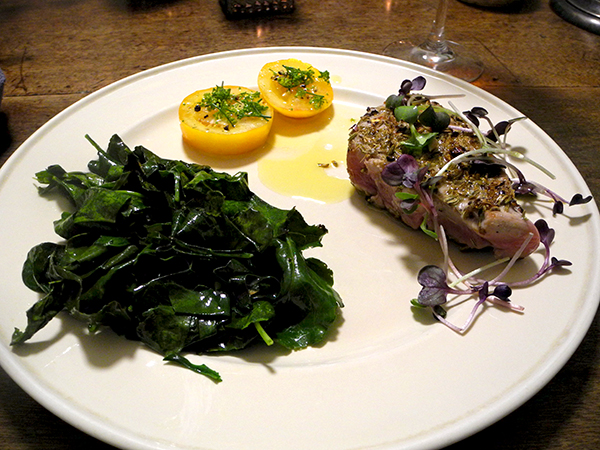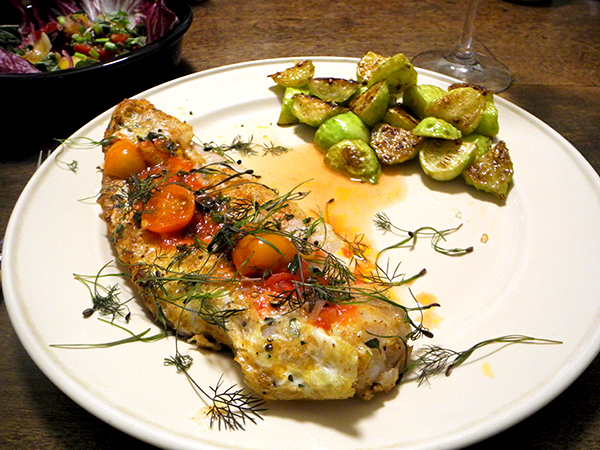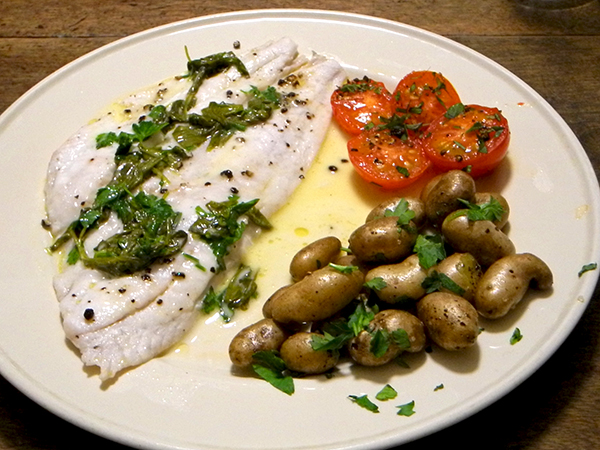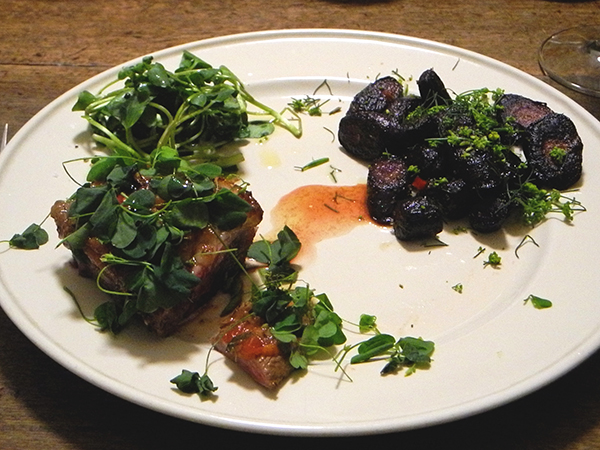
Until the night before cooking this meal I hadn’t thought about the fact that there had been no meat entrée on our table in almost 2 weeks. It was probably my thinking about the purple carrots I had bought a few days earlier that made me think I should prepare something, with a little substance than seafood, a frittata, or a light pasta, something, well,.. ‘meaty’.
Just before the meal I found myself extending the idea of ‘substantial’ to thoughts about a sauce, something I rarely do to the very simple recipe I regularly use.
Some of you may know of and even share my interest in ‘garum‘ (at least from afar). It seems I may have tripped over a vegetable near-equivalent, although one with a taste far less difficult to acquire. Just about a week before this meal I had served a flounder fillet with a ‘tomato butter’. I did not use all of the tomato sauce, so I put what remained in the refrigerator, sealed, later adding to it more seasoned heirloom tomato juices, produced in preparing a later meal (I’m no longer sure which one).
Last night I tasted this still-curing little treasure, and decided it would definitely work with the duck.
To introduce the meal, there was the most minimal of appetizers, as an excuse to enjoy the remainder of a bottle of wine we had started the night before.
- terrific rustic Italian breadsticks, Mario Fongo grissini integrali, from Buon Italia
- the wine was a New Mexico (Sierra County) sparkling rosé, Gruet Brut Rosé
- one 13-ounce boneless duck breast from Hudson Valley Duck Farm, the fatty side scored in cross hatching with a very sharp knife, the entire breast then sprinkled with a mixture of sea salt, freshly-ground pepper, and a little turbinado sugar (in our kitchen, the bowl of sugar has been infused over time with a vanilla bean), the duck left standing for 45 minutes or so before it was pan-fried, fatty side down first, in a tiny bit of oil over medium heat, usually draining the oil part of the way through (to be strained and used in cooking later, if desired), but I decided not to this time, removed when medium rare and cut into 2 portions to check for doneness (that is, not so done), left to sit for several minutes before finishing it with a drizzle of organic lemon, a coating of ‘tomato butter’ [described above], a sprinkling of oxalis from Alewife Farm, and drops of a very good Campania olive oil (the tenderloin, removed earlier from the breast and also marinated, is always fried very briefly near the end of the time the breast itself is cooking)
- wild watercress from Max Creek Hatchery, dressed with the Campania olive oil, salt, and pepper
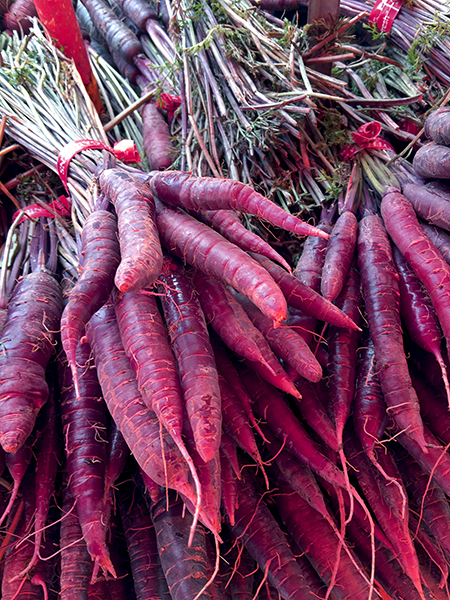

In the photograph at the top of this post the carrots look charred, in reality, it’s an attribute of their color[s] (that is, purple outside, lighter, almost orange, inside, before they are cooked), a little intentional caramelizing on their edges, and the available light.
- purple carrots from Paffenroth Farms, scrubbed, lightly-scraped with a paring knife, cut into small diagonal pieces, and, to avoid a hot oven last night, sautéed until tender on top of the range in a large seasoned cast iron frying pan, some sea salt added while doing so, then sprinkled with freshly-ground pepper and served scattered with fennel flowers from Mountain Sweet Berry Farm
- the wine with the main course was a California (North Coast) red, the gift of a friend, Cartlidge & Browne Merlot 2013
- the music for most of the meal was the album, ‘Miklos Rozsa’s Double Life: Concert Music For Strings’
